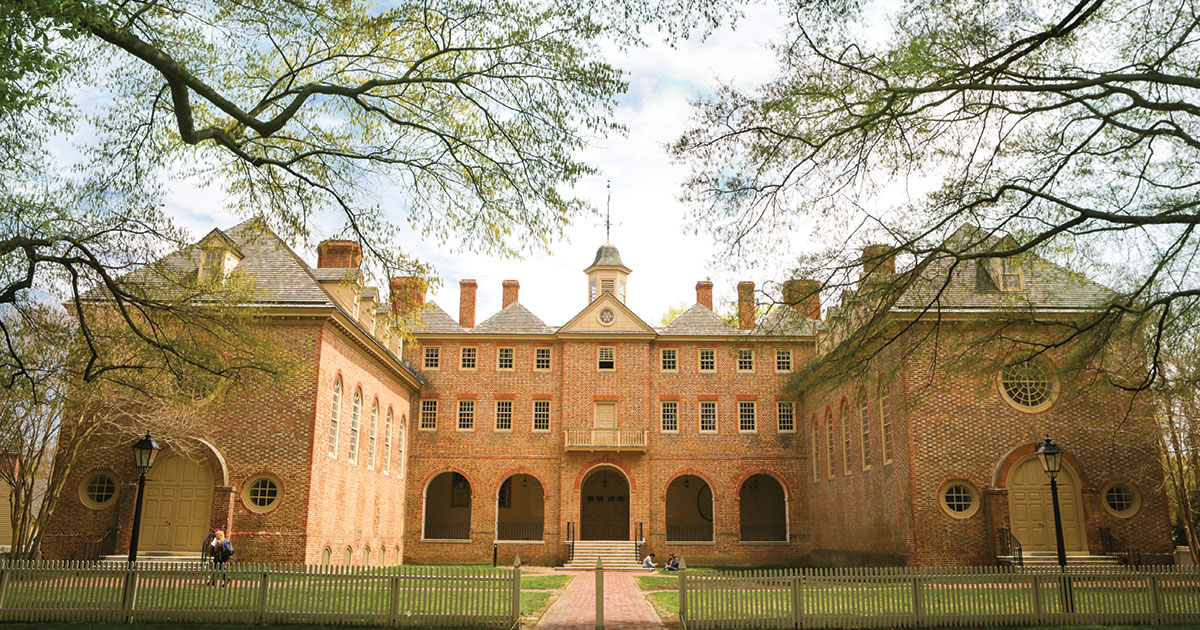1693 Scholars welcome largest class in program's history
Five musicians, three valedictorians, a Tai Kwon Do black belt, president of the ping pong club, a gymnast, a soccer star, a playwright, an entrepreneur. No, this isn’t the Olympics of academia (though it may as well be); it’s actually just some of the collective credentials of William & Mary’s incoming freshmen class of 1693 Scholars — a lean group of eight students that also happens to be the largest class in the program’s 12-year history.
“Their lists of interests are unbelievable,” said Dan Cristol, director of the program and a professor of biology. “We like that diversity in our scholars. I don’t pretend to know what they are going to become someday because usually I’m wrong, but I am really excited to find out.”
Founded by former W&M president Tim Sullivan alongside former W&M Rector James B. Murray, Jr., (J.D. ’74, LL.D. ’00) and his wife Bruce, with the intention of creating one of the nation’s premier merit-based scholarships, the 1693 Scholars Program provides students with significant financial rewards (full four-year scholarship for in-state students, and partial for out-of-state), personal mentorship, special access to classes, events, programs and faculty members, and a $5,000 research stipend.
Historically, the donor-funded program has accepted anywhere from three to seven students. But this year, new gifts from Sally Ives Gore ’56 and H. Thomas Watkins III ’74 as part of the university’s For the Bold campaign, made the slight increase in admittance possible — a longtime plan for Cristol, who’s been heading the program since 2007, and Kim Van Deusen, associate director of 1693 Scholars.
“Eight incoming students seems like a fitting amount for us right now,” said Van Deusen. “We want to have a significant number of students so they can have a bigger impact on campus, but we still want it to be small enough so we can really work with the students individually and Dan can do intense advising with each of them.”
Selection into the highly competitive program is a rigorous process. Everyone who applies to the university is initially considered, and then the pool is continuously whittled down until a group of 25 finalists remain. Those 25 prospective students are invited to campus for a weekend of interviews and meetings with faculty, administrators and students, until a select few are given offers.
“A lot of students really get to know this place and what it’s all about through that experience,” said Van Deusen. “And that’s really our goal. Having them come here and spend a few days on campus meeting students — that’s a fantastic recruiting tool.”
This year’s crop of scholars hails from four different states and possesses a well-balanced collection of academic interests, from Russian literature to physics and international politics. Many of them, including Hali Pregnall, a freshman from Poughkeepsie, New York, who’s interested in biology and marine science, cite finalists weekend as the moment that solidified their decision to become a member of the Tribe.
“When I came to William & Mary for the finalists weekend, I immediately fell in love with the Scholars Program, mostly because of the people I met,” said Pregnall. “Every student and faculty member I spoke with was kind, genuine and really took the time to get to know me. Each scholar has their unique interests and personality, and when they all come together, it feels like such a family.”
Jared Bergen, a new scholar from Sayville, New York, who plans to study international relations and American studies, echoes that sentiment, and adds that the benefits associated with undergraduate research are also what attracted him to the program.
“My high school experience largely revolved around conducting independent research projects, both in science and history,” Bergen said. “Having devoted years to such projects, developing deeper understandings of those projects as well as my own academic abilities, I wasn’t ready to say goodbye to research after graduation. The 1693 Scholars Program, in its research opportunities for the scholars, was the primary draw for me. I am thrilled to be able to continue the process of questioning the world through the program.”
In addition to research, Bergen and his fellow scholars will be able to take advantage of a host of opportunities offered to them, including new perks this semester such as lunchtime meetings with faculty members of their choice, a mentor-mentee program with upperclassmen scholars and regular end-of-semester resume evaluations with Cristol.
In the future, Cristol and Van Deusen plan to keep growing the 1693 Scholars Program, ideally to a still manageable 10 students per incoming class, with full scholarships for both in-state and out-of-state students. But for now, they’re reveling in the amazing eight — and 19 sophomore, junior and senior scholars — on campus right now.
“Academically, they’re all amazing,” said Cristol. “What we’re really looking for are the students who are future leaders — who’s going to write books in college or start clubs we never knew we needed. Who’s going to leave here and really make a difference because they are that committed to making the world a better place?”

